Great Design Plant: Chuparosa Brightens Casual Desert Gardens
http://decor-ideas.org 06/22/2014 19:14 Decor Ideas
It may come as a surprise that many plants native to the dry desert produce beautiful flowers. Chuparosa is one such plant; its bright red flowers add beauty to landscapes throughout the low-desert regions of the Southwest. Found along desert washes, chuparosa takes advantage of sporadic water availability and thrives in hot, dry conditions. Wherever you find chuparosa, you will most likely find hummingbirds hovering nearby ready to feed upon its brightly colored flowers.
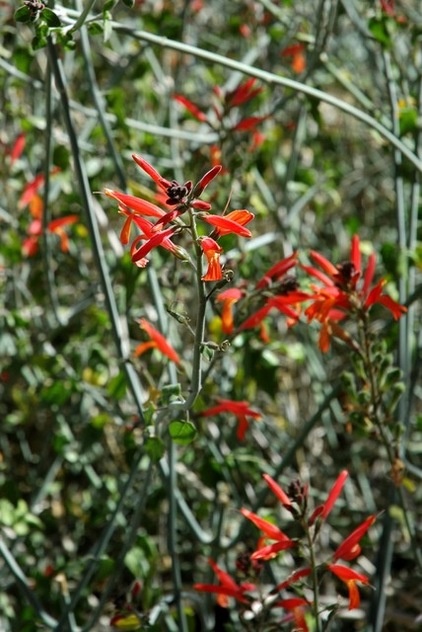
Botanical names: Justicia californica
Common names: Chuparosa, beloperone
Origin: Native to the Sonoran Desert of North America
Where it will grow: Hardy to 20 degrees Fahrenheit (USDA zone 9; find your zone)
Water requirement: Low
Light requirement: Full, reflected sun to light, filtered shade
Mature size: 3 feet tall and 4 to 5 feet wide
Benefits and tolerances: Drought tolerant once established, but looks best when watered deeply twice a month in summer and once a month throughout the rest of the year; attracts hummingbirds
Seasonal interest: Red, tubular flowers appear sporadically throughout the year, with the heaviest bloom occurring in early spring
When to plant: In spring or fall, from cuttings or transplants
Shown: Chuparosa’s tubular flowers
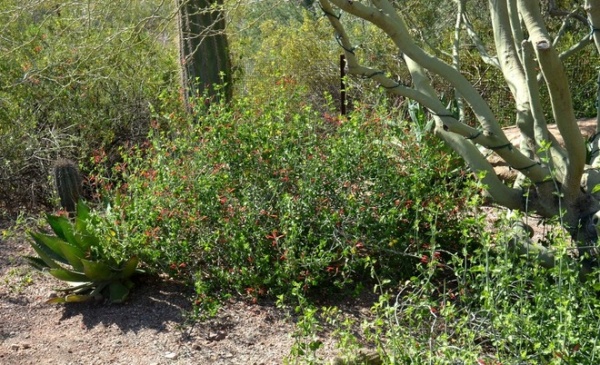
Distinguishing traits. Found along the washes throughout the Sonoran Desert in Arizona, California and Mexico, chuparosa is a desert native that has a lovely, natural, open shape. This native shrub adds beauty with its flowers to any informal desert garden setting.
The gray-green branches of this shrub are succulent, and its heart-shaped leaves are bright green. The leaves of chuparosa fall in response to drought conditions or cold temperatures.
Shown: Chuparosa growing between an agave and a palo verde tree
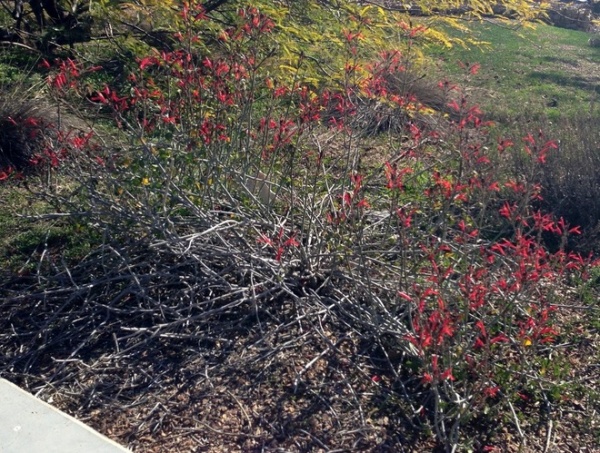
While chuparosa is very drought tolerant, it does best when watered deeply to a depth of 2 feet twice a month in summer and once a month during the rest of the year.
Damage to foliage occurs when temperatures dip into the upper 20s, and the entire plant can be killed to the ground if temperatures dip into the low 20s. Regrowth in the spring is rapid.
Prune in spring to remove any frost-damaged growth or woody, unproductive branches.
Shown: The leafless branches of chuparosa in bloom
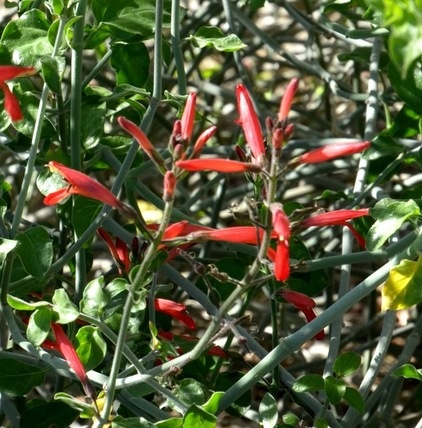
The narrow, tubular flowers of chuparosa measure 1 inch long and are tailor made for the the long beaks of hummingbirds. Chuparosa is the main food source of hummingbirds who live outside of urban areas in this desert.
Although flowers appear sporadically throughout the year, flowering peaks in the spring, adding glorious color to the desert landscape. Whether the branches are covered in leaves or leafless, flowering is the same.
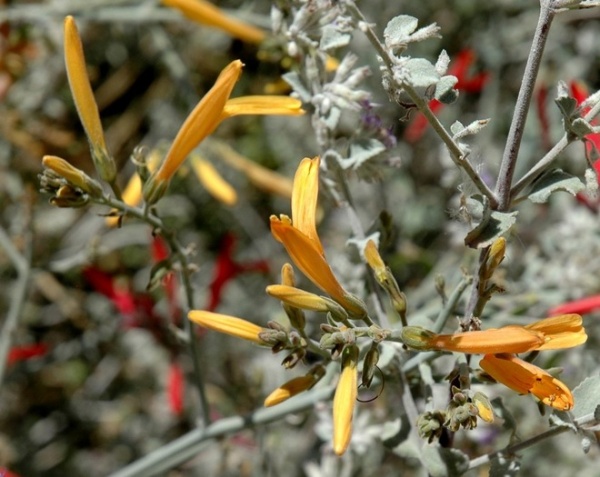
While the most common form of chuparosa has red flowers, there is a yellow variety available as well.
Shown: Yellow-flowering variety of chuparosa
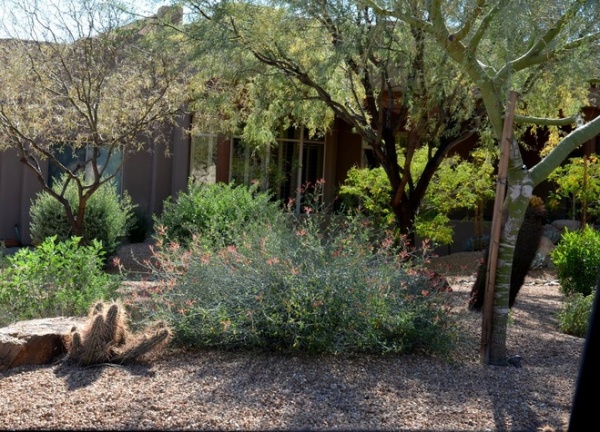
How to use it. The natural, open form of this shrub lends itself perfectly to natural landscape settings in the low-desert zones of 9 to 11. Chuparosa is drought tolerant and low maintenance, suitable for natural, desert-themed landscapes rather than a formal setting.
Pair it with other flowering desert natives, such as blackfoot daisy, brittle bush, damianita, desert marigold or globe mallow. Add chuparosa where its open form will soften the foundation of a house or along a garden pathway. Plant it alongside a patio or courtyard where you can view its flowers and their hummingbird visitors up close.
Shown: Chuparosa planted in a natural, desert-themed landscape
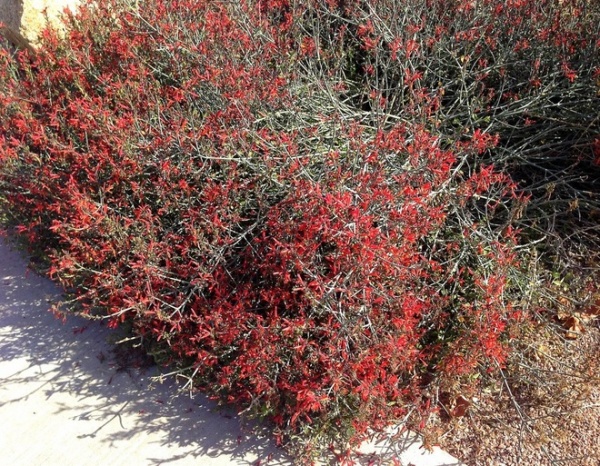
Planting notes. Plant it in well-drained soil. Dig the hole three times as wide as the rootball to help it establish more quickly. As chuparosa is native to the desert Southwest, it is adapted to the nutrient-poor soil, so no supplemental fertilizer is required. Chuparosa does best in full sun or the light, filtered shade of desert trees such as mesquite or palo verde.
Shown: Chuparosa in full bloom
Discover more plants native to your gardening region
Related Articles Recommended












